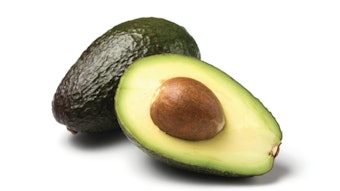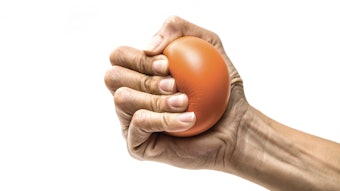
In an increasingly digital world, the wellness industry stands at a fascinating crossroads where ancient healing traditions meet cutting-edge technology. This convergence is reshaping how spas deliver services, how clients experience wellness and how the industry as a whole evolves to meet changing consumer expectations. As wellness technology continues to advance, it's creating new opportunities for personalization, efficiency and enhanced experiences that were unimaginable just a decade ago. From immersive environments to advanced biometric monitoring, the technological revolution in wellness is just beginning.
The Technological Revolution in Wellness
The integration of technology in wellness tourism and spa locations represents a profound transformation in service delivery methods and customer experience enhancement. Modern wellness technology facilitates customization, operational efficiency and elevated consumer experiences while simultaneously reshaping access to wellness resources and fostering proactive wellbeing management.
Self-service technology (SST) in particular has emerged as a game-changer, allowing guests to customize their interactions with wellness facilities according to their preferences. From digital check-ins to app-based service bookings, these technologies are streamlining processes and reducing wait times, enhancing the overall guest experience while offering significant operational benefits for spa businesses.
Among the innovators in this space is Wellscape, founded by Brian Paris. The company specializes in AI-generated immersive visual environments for spas and wellness centers. Using computer-controlled screens that project customizable naturescapes, Wellscape brings light, life and movement to any room, revolutionizing guest experiences with technology that adapts to each property's specific needs and budget.
Personalization: The Heart of Wellness Technology
Perhaps the most significant impact of wellness technology lies in its ability to deliver personalized experiences. Today's consumers expect services tailored to their unique needs, and technology enables spas to deliver on this expectation in revolutionary ways.
Advanced systems can now collect data on guest preferences and behaviors, enabling spas to create highly customized experiences. Imagine walking into a spa where, thanks to your previous visits or pre-arrival questionnaires processed through intelligent systems, the staff already knows your preferred room temperature, massage pressure, aromatherapy selections and music choices.
As explained by Jessica Wadley, VP of business development for integrative health & wellness at OAKWORKS Inc., technology like their SoVi system delivers "healing frequencies at a high enough energy level to be effective," creating an immersive experience that can be tailored to individual needs. Such technologies exemplify how wellness facilities can provide deeply personalized services that respond to each client's unique physiological and psychological state.
Beyond Convenience: The Transformative Power of Wellness Tech
Wellness technology extends far beyond mere convenience. It's transforming the fundamental nature of spa services by:
- Creating immersive experiences: Virtual reality meditation pods, sound therapy systems and sensory-controlled environments are taking relaxation to new depths. These technologies don't just enhance traditional services—they create entirely new wellness experiences. Wellscape's AI-generated naturescapes exemplify this trend, offering spas and wellness centers the ability to transform any space into a visually captivating environment that enhances the overall guest experience.
- Enabling data-driven wellness interventions: Smart technologies can help track progress over time, showing tangible results from wellness activities. This evidence-based approach helps clients see the value of their wellness investments.
- Bridging the gap between wellness and healthcare: As wellness technology becomes more sophisticated, the line between spa services and preventative healthcare is blurring. Spas equipped with advanced biometric scanning, stress analysis and recovery technologies are positioning themselves as essential partners in holistic health management.
- Democratizing wellness: Self-service technologies are making wellness more accessible, allowing facilities to serve more clients efficiently while potentially reducing costs.
Expert Insights: The Present and Future of Wellness Technology
Ryan Martelli, vice president of sales at TELLI, offers valuable perspective on both the challenges and future of wellness technology: "Spas adopting new technologies face challenges like high costs, staff resistance, integration issues, customer adaptation, maintenance demands, data security risks and keeping pace with trends." These can be overcome, he suggests, "by spreading costs through leasing or financing, offering incremental staff training with incentives, selecting compatible systems, providing hybrid options for clients, securing vendor support for maintenance, implementing robust cybersecurity and staying informed through industry networking."
Looking ahead, Martelli envisions significant advancements: "Wellness technology is poised for some fascinating leaps over the next five to 10 years, driven by advances in AI, wearables, biotech and personalized data. We're already seeing devices like smartwatches track heart rate, sleep and stress. Still, the future will take this to a new level with more precise, real-time health monitoring—think biosensors that analyze sweat for cortisol levels or blood sugar or even implants that nudge you when your inflammation's spiking."
The Future Landscape: What's Next for Wellness Technology
Martelli further explains how this technology will transform the spa industry: "Spas can shift from being reactive—fixing stress or soreness after the fact—to preventative hubs, using tech to tailor experiences down to the individual. Imagine a client walks in, their wearable syncs with the spa's system, and instantly, the staff knows they've had a rough week of sleep and elevated stress. The spa could then customize a massage, aromatherapy or even a sound bath to target those exact needs. It's like a spa day with a PhD in you."
The future also includes advances in immersive technology: "Beyond personalization, there's room for immersive tech—VR meditation pods that transport you to a forest or beach, paired with biofeedback to deepen relaxation. Smart saunas could adjust heat and humidity based on your body's response, while AI-driven nutrition plans could complement treatments with take-home wellness advice."
Jessica Wadley also highlights one such innovation already available: "Oakworks SoVi technology is designed to deliver healing frequencies at a high enough energy level to be effective. Healing frequencies reach up well into the easily heard range, and due to the higher energy output of our system, the vibroacoustic elements can be heard. When coupled with either output from the built-in stereo speakers or headphones, they create an immersive experience."
This technology is available in Oakworks treatment tables and loungers, offering spas a way to enhance traditional services with cutting-edge vibroacoustic therapy. Due to SoVi's unique features, Wadley recommends that "when more than one SoVi is used in a room, a single source of content is used to avoid a confusing auditory space. This can be accomplished through the use of a Bluetooth broadcast system or a hardwired system."
Balancing Technology and Humanity
As Martelli observes, "The big opportunity here is positioning spas as essential wellness partners, not just luxury treats. They could integrate with healthcare, collaborating with doctors or insurers who see the value in preventative care. The challenge will be balancing tech with the human touch—people still crave connection, not just algorithms. Spas that nail this blend could redefine relaxation and health, making them a go-to in a world obsessed with optimization."
This balance between technological innovation and human connection will be crucial. Technology should serve as a tool that empowers staff to deliver more effective, personalized care—not as a replacement for the empathy, intuition and healing presence that skilled practitioners bring.
This balanced approach reflects the true essence of wellness itself: integrating diverse elements to create a harmonious whole. Just as mental wellness exists on a spectrum from languishing to flourishing, with practices that increase mental wellness serving as protective factors for overall health, the integration of technology in wellness settings exists on a continuum where the right balance must be found for each facility and client.
Conclusion
The convergence of innovative companies like Wellscape with their AI-generated visual environments and Oakworks with their SoVi vibroacoustic technology demonstrates how the wellness industry is embracing technological advancement while maintaining its core mission of enhancing wellbeing.
The future of wellness technology offers tremendous potential for enhancing the spa experience, improving operational efficiency and expanding the impact of wellness services. By strategically embracing these innovations while maintaining focus on human connection and individualized care, the wellness industry can leverage technology to help more people move from merely managing health challenges to truly flourishing.
For spa professionals navigating this evolving landscape, staying informed through industry networking, ongoing education and partnerships with technology providers will be essential to harnessing the full potential of wellness technology while staying true to the timeless human elements that remain at the heart of all effective wellness experiences. As the experts interviewed for this article demonstrate, the most successful integration of technology will be one that enhances rather than replaces the human experience of wellness.










